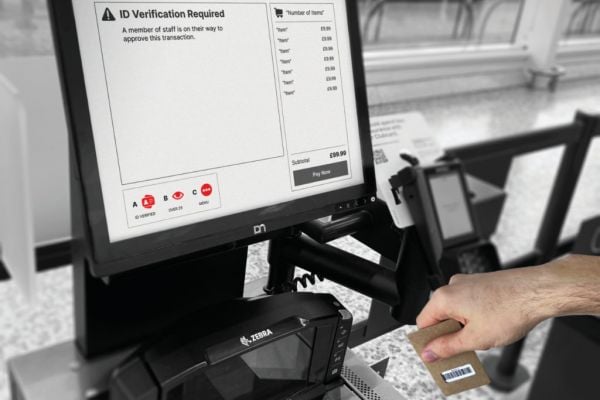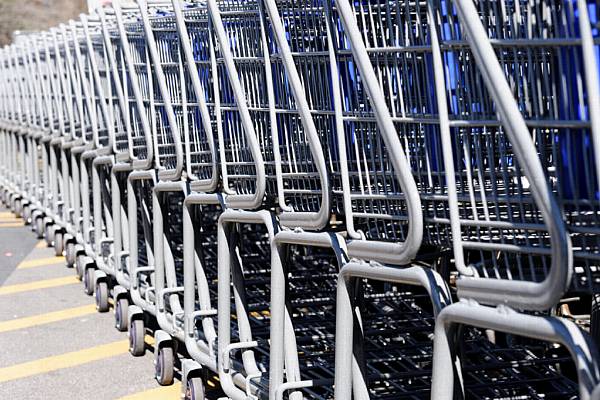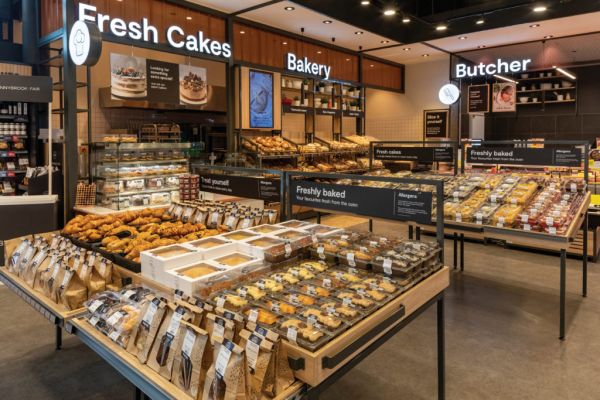A new study by the ECR Retail Loss Group explores potential ways for retailers to ‘humanise’ the self-checkout process. This article first appeared in ESM's March/April 2024 edition.
‘If I had asked people what they wanted, they would have said faster horses.” This oft-cited quote from Henry Ford, the founder of the Ford Motor Company, is a good analogy of how consumers can sometimes be reluctant, or even resistant, to embrace new technologies in the marketplace.
This certainly seems to be the case with self-service checkouts (SCO) in supermarkets. In theory, a tool that can reduce labour costs, speed up purchasing and increase efficiency seems like an essential technology in which any supermarket would wish to invest.
However, like all technologies that revolutionise the marketplace, many consumers have expressed frustration and misgivings, with some complaining that the SCO technology has made the retail experience more complicated and less personal than it needs to be.
Theory Versus Practice
It is also important to note that just because the idea of an SCO looks good on paper does not mean that it will automatically be embraced by traditional customers. An example of this was seen last year, when supermarket chain Booths announced that it was removing self-checkouts from most of its stores, due to negative feedback from its clientele.
Introducing innovations to the marketplace requires research and a clear plan. A poor strategy and unfocused approach can drive away customers and reduce sales.
A Human-First Approach
To help address some of these issues, ECR Retail recently launched a study, whereby it had arranged for designers from University of the Arts London to work with Britain’s top supermarkets to develop a series of in-store innovations that put ‘humans, rather than technology, first.’
For the project, undergraduate designers applied human-centred design (HCD) approaches to develop product, user experience (UX) and service design proposals.
The accompanying report, titled Rehumanising the Self-Checkout Experience, suggests five design ideas that can improve SCO experiences, reduce losses, and ensure that the process is user friendly.
Personalised Experience
The research indicates that personalisation is important, and that a loyalty system approach is an effective way of managing each customer’s individual needs.
This can be achieved by customising settings and by improving the user interface (UI) and UX via a dedicated app, which would be applied to a customer’s loyalty card. A scan of the loyalty card would lead to the customer’s default set-up, allowing a more efficient process that skips navigating menus or selecting options.
AR Surveillance
New technology and new platforms can sometimes lead to concerns about privacy. The report suggests that using augmented reality (AR) could maintain anonymity while making the system more fun to use. When shoppers use the SCO, they could appear as colourful AR avatars on the CCTV screen.
Interaction Driven
As convenient as automation can be, it can sometimes come at the price of human connection. The report seeks to address this by suggesting a bar code system to streamline interventions like ID checks, age verification, and item overrides, which typically slow down the SCO process.
This way, a staff member can scan a bar code while engaging face to face with the customer, rather than having the distraction of searching through multiple screens. This approach would allow for efficiency without sacrificing the face-to-face approach.
Cost-Of-Living Assistance
One of the main issues facing consumers at present is inflation and keeping a balanced budget. A good self-checkout experience could offer suggestions in areas such as budgeting or recipes.
This could include analysing a customer’s basket contents at checkout and offering recipe suggestions on the screen, along with a printed receipt for the customer to take home.
Intelligent Lighting Systems
Some customers have needs that are more pressing than others. To help make this distinction, researchers suggested a lighting system, whereby customers who need immediate attention are highlighted by a distinctive yellow arrow.
To differentiate between the type of help needed, the system suggests using ‘half’ and ‘full’ arrows to indicate the urgency of the issue.
In compiling the report, researchers worked with retail partners including Tesco, Sainsbury’s, Waitrose and Co-op, while designers used a four-dimensional security function framework to develop their concepts, encompassing purpose, security niche, mechanism and technicality.
‘Innovative Ideas’
Tesco has indicated that the findings of the report have been put into practice for a number of projects already in development.
“I collaborated with these remarkable students for six months, from brainstorming ideas through to completion,” said Victoria Glenn, project manager at Tesco. “We’ve incorporated their innovative ideas into our business, resulting in several exciting initiatives planned for next year.”
Similarly, Sainsbury’s has attested to the value of the research.
“This has absolutely hit the brief in terms of our current strategies and pain points,” said Mike Beach, head of loss prevention and change at Sainsbury’s. “It’s a great help.”
Potential Downsides
The report does not shy away from examining the key issues that can have a negative effect on consumers when using SCOs.
Like all technology, self checkouts can be vulnerable to glitches and can cause consumers to become frustrated, which can hit the bottom line. SCOs can also delay processes requiring age verification.
The report also highlights questions about the effect that SCOs will have on employment, and wider social issues, such as the prospect of human jobs being replaced by automation.
‘A Balanced Approach’
Colin Peacock, group strategic coordinator at ECR Retail Loss, told ESM that, when addressing their SCO infrastructure, retailers should start with the adoption of a cross-functional team approach.
“As one of the findings from a previous ECR report called out, SCO projects can become fixated with productivity, at the exclusion of other priorities,” said Peacock.
“We are increasingly seeing retailers adopt cross-functional team approaches, including loss prevention, UX, customer service, store format and design, productivity, front end, IT, store operations, finance, etc., and these are leading to a more balanced approach.”
ECR Retail Loss predicts that while the expansion of SCO machines in stores will continue, the true challenge ahead will lie in taking measures to reduce theft and errors by users, while also building customer loyalty and trust. Achieving high customer satisfaction while preserving operational efficiency can be a delicate balancing act.
This article first appeared in ESM's March/April 2024 edition.














